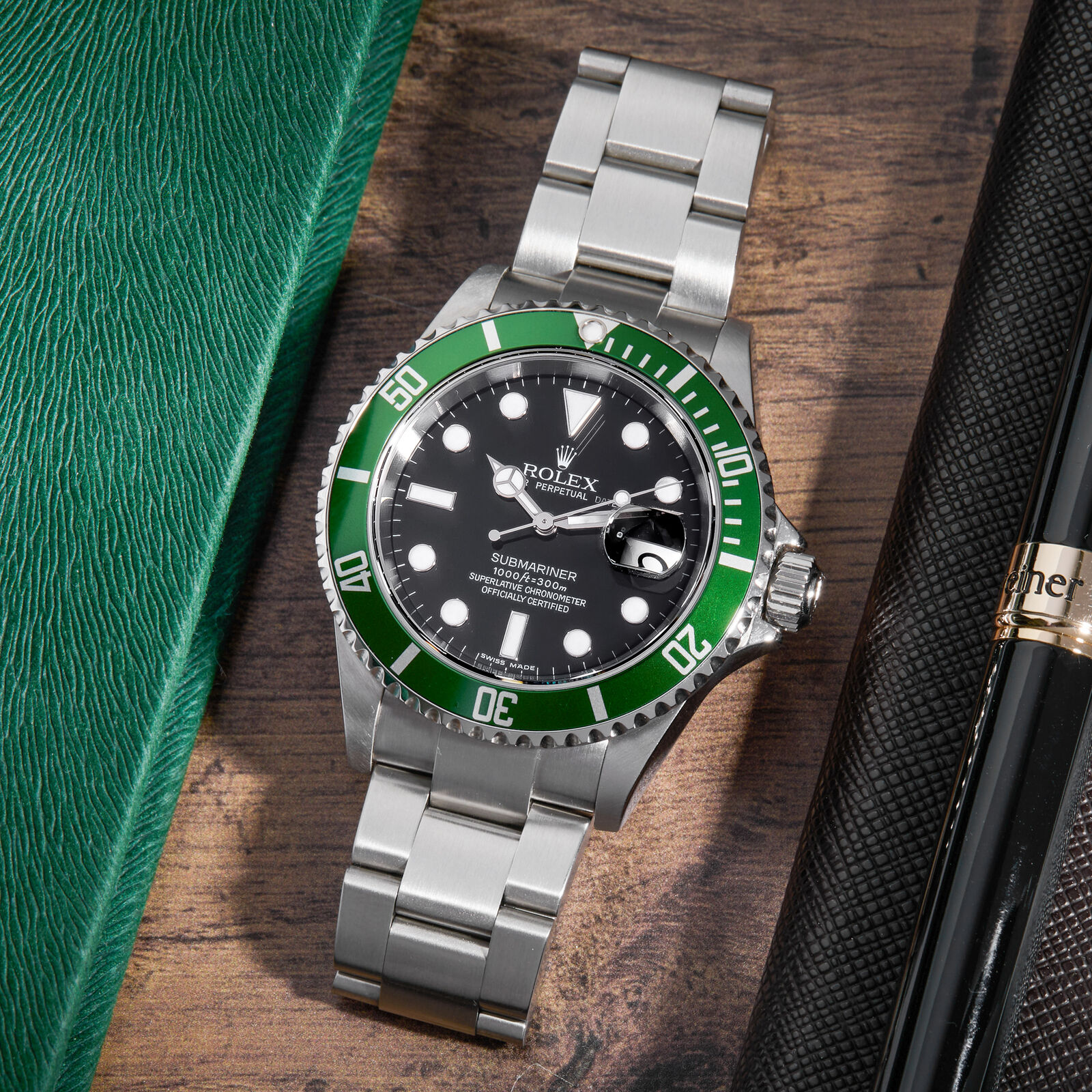Curious about the different types of watch bezels? So were we, so we decided to do a quick post on eight main types of watch bezels!
We’ll tell you about diving bezels, calculator bezels, tachymeters, and a few more. And we’ll help you figure out how to use the more complicated type of bezels, so you can really get the most out of your brand new watch!
Fixed (Stationary) Bezels

Fixed bezels are very common in affordable watches. Their purpose is to protect the glass, dial, and to keep the crown in place, and they don’t have any other functions. They are usually made from the same material as the rest of the case and are some of the most durable parts of a watch. These bezels are also common in watches that feature an internal rotating bezel.
GMT (World Time) Bezel
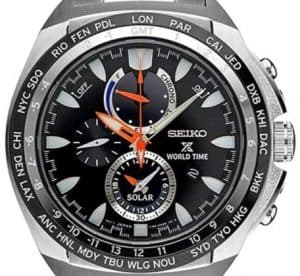
GMT bezels are not something you see every day because they’re usually featured only on GMT watches. And those are pretty rare since only the big brands make them. A GMT bezel is used to tell the time in different time zones, and it can look different depending on the manufacturer. Some GMT bezels have names of prominent cities and indicators of how much ahead/behind of GMT they are.
To use this type of GMT bezel, you should align your hometown with the GMT hand, and then just look at the city that interests you to note the time difference.
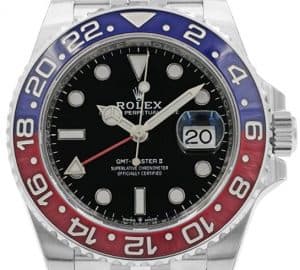
The other type of GMT bezel is the one we see in Rolex watches. It features hour markings (0-24) that work with the GMT hand to allow you to tell the time in two different time zones simultaneously. It’s simpler to use than the previous type of GMT bezel, but also has a more limited function.
Count Up (Diving) Bezel
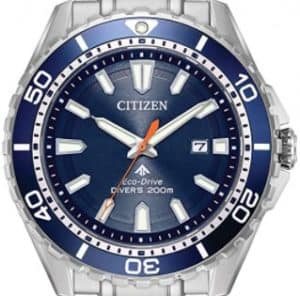
Count up bezels are the unidirectional rotating bezels that you always see on diving watches. They feature minute markings from zero to 60, usually in 10 or 15-minute increments. The purpose of this type of bezel is to keep track of how long you’ve been underwater. The best thing about these bezels is that even if you bump them accidentally while you’re underwater, you can’t add time. You can only subtract time because they are unidirectional, so the worst thing that can happen is you’ll come out for air sooner.
Say you’ve only got 20 minutes of air in the tank – you’ll turn the bezel to 20, and it will slowly count up back to zero while you’re under. When you see that the bezel is only five minutes away from zero, you know it’s time to head back to the surface otherwise you’ll run out of air. The good count-up bezels have lume in them, allowing you easily read them even in the dark.
Countdown Bezel

Countdown bezel are similar to count-up bezels, with a few significant differences. These bezels are used to count down from 60 to zero, and they are normally bi-directional. A countdown bezel is used to keep track of remaining time in an event like a race or a work presentation. They function just like stopwatches – when you want to use a countdown bezel, you should turn it until the zero is aligned with your target time limit, and just let it tick down the minutes.
Tachymeter Bezel
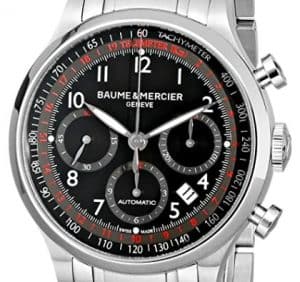
Tachymeter bezels are used to measure the speed at which something (or someone) is traveling. They can be internal and external bezels, and there’s a lot of different takes on what the perfect tachymeter bezel should look like. But they all function in the same way!
Tachymeter bezels are extremely popular with racers, as it allows them to track how fast they are going. They’re quite easy to use and I will leave a link that demonstrates how to use a tachymeter bezel, since I’m really bad at explaining these things in simple terms.
Another thing you should know is that this type of bezel also allows you to calculate how fast you are jogging. You can even use them to measure distance, but both of these functions require you to do some light math in order to get the correct result.
Compass Bezel
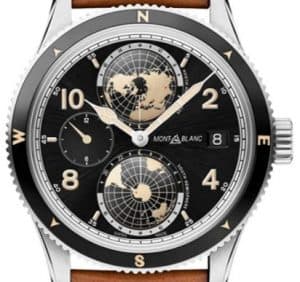
Some watches are equipped with a compass bezel that displays the sides of the world. These bezels are bidirectional, so you can easily check which direction you’re walking in even if you don’t have a proper compass on you.
Compass bezels are common in watches that are designed for hikers, sailors, and generally people who spend a lot of time outdoors. They are meant to help you in case you get lost, but you need to know how to figure out which side you’re facing using the hour hand and the compass bezel. That’s an old boy scout trick and I’ll leave a link to a video that explains this much better than I ever would – it starts near the six-minute mark.
Breitling (Slide Rule) Calculator Bezel
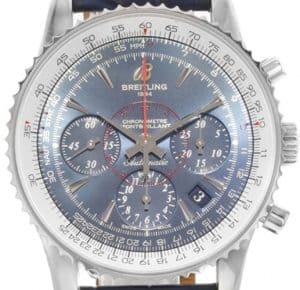
Breitling Navitimer watch has a slide rule bezel that works as a calculator. It takes some getting used to, but once you get the hang of it, you will be able to calculate tips and convert kilometers to miles before someone else even has a chance to pull out their smartphone.
This type of bezel has an inner and an outer logarithmic scale. And it looks extremely confusing at first, but I promise you it’s easy to learn how to use it. The inner scale is fixed, while the outer scale rotates bi-directionally. Learning how to use them together lets you perform all sorts of mathematic calculations on the go, just as long as you keep in mind that the bezel doesn’t account for decimal points.
Internal Rotating Bezel

There are a lot of watches out there that have an internal rotating bezel. This can be a countdown bezel, a tachymeter, a compass bezel or pretty much any other type of watch bezel that exists.
You can rotate these bezel buttons near the crown, so you do get the same functionality as you would from an external bezel. But they’re not the recommended solution for diving watches – when you have those extra buttons near the crown, it means that there are extra holes through which the water can come in to completely ruin your watch. So stick with external bezels for divers, but feel free to grab a watch with an internal rotating bezel for everything else.




